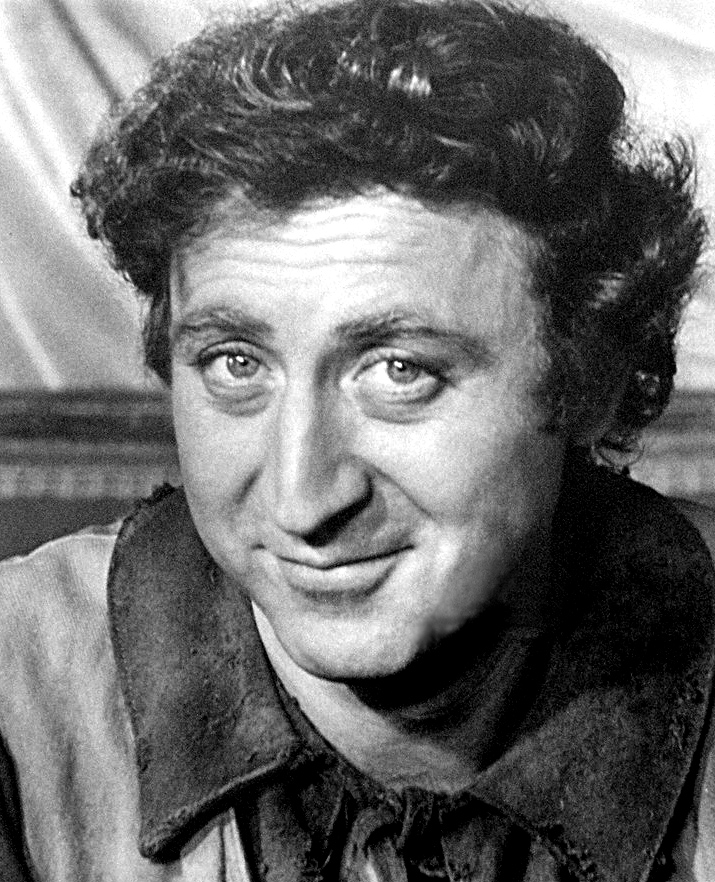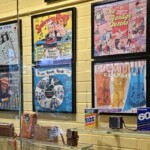
The masses treasure and admire the late Gene Wilder for his comedic talents and affable on-screen persona. A mensch-type who alternated beautifully between sentimentality and near-lunacy on screen, the gifted actor particularly had us ROTFLOL – before there was even an acronym for it – as Leo Bloom, The Waco Kid, Dr. Frankenstein and Willy Wonka.
While this could be a column about Wilder’s own singing talents (Who doesn’t have the phrase “There’s no earthly way of knowing which direction we are going” regularly swimming around their head?), I’m going to take a step outside the pure imaginativeness of his films and describe how he (indirectly) helped several musicians gain or regain their commercial footing. It’s important to realize Wilder’s gold didn’t just apply to the box office.
With that, hold your breath, make a wish, count to three, and open your ears:
1. Sammy Davis, Jr. – “The Candy Man” (1972)
Sammy doesn’t appear anywhere in Willy Wonka & the Chocolate Factory. As we know, this feel-good ditty is sung in the film’s first five minutes by British actor Aubrey Woods. Ironically, Sammy, who enthralled audiences for decades with songs like “Mr. Bojangles,” hated the song, finding it too sweet for his liking. Despite this, the tune would become the Rat Packer’s only number one hit, topping the Billboard Hot 100 for three weeks in 1972. Billboard ultimately crowned “The Candy Man” as the fifth most popular song of the year – no easy feat given soul competition like “If You Don’t Know Me By Now,” “Back Stabbers” and “Lean On Me.”
2. Frankie Laine – “Blazing Saddles Title Theme” (1974)
Blazing Saddles boasts some terrific tunes; I’m laughing just typing out the words “The French Mistake.” But all great westerns need a great theme song. Hey, look at Gene Pitney’s classic, “The Man Who Shot Liberty Valence,” which wasn’t even used in the film! Reportedly, Mel Brooks wanted a Frankie Laine style singer to sing the film’s title track. Instead he got the actual “Jezebel” crooner, who took his task so seriously Brooks and crew fought hard not to ruin the façade by telling him the film was a comedy. While the song didn’t chart, Laine’s vocals set the tone and stage for a rip-roaring farce involving Bart the Sheriff. Not bad, considering Laine’s last Billboard charting single was five years earlier.
3. Aerosmith – “Walk This Way” (1976)
It’s one of rock ‘n roll’s greatest bursts of musical inspiration. The bad boys of Boston were recording what would become their breakout mega-seller Toys in the Attic when they were struck with a bad case of writer’s block. During a break in recording, band members and noted producer Jack Douglas went to a showing of Young Frankenstein. The iconic scene of Igor instructing Gene Wilder’s Dr. Frankenstein (that’s Fronk-in-steen) to “Walk this way” got the musicians laughing, and inspired them to build a track around the phrase. Their end result was released in 1977, becoming the group’s second of two Top Ten hits in the 1970s – the first being “Dream On,” which peaked at number six the previous year.
4. Stevie Wonder – “I Just Called to Say I Love You” (1984)
The musical backbone of Wilder’s 1984 comedy The Woman in Red, Stevie’s sentimental ballad climbed all the way to number one on the Billboard Hot 100 for three weeks that same year. The tune also netted Stevie an Academy Award for Best Original Song. Not that this genius ever needed a comeback, per se, but this was a true highlight of his 1980s career, wedged nicely in-between his “Master Blaster”/Hotter Than July period and his forthcoming In Square Circle album. The latter would be released in 1985 and feature Stevie’s last solo number one Hot 100 single, “Part-Time Lover.”
-Ira Kantor
Dig the column? Reach out to Ira via email at ikantor84@gmail.com or on Twitter at @ira_kantor







Be the first to comment!